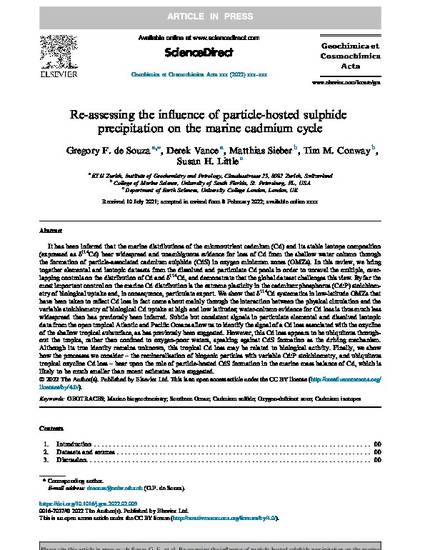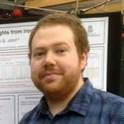
- GEOTRACES,
- Marine biogeochemistry,
- Southern Ocean,
- Cadmium sulfide,
- Oxygen-deficient zone,
- Cadmium isotopes
It has been inferred that the marine distributions of the micronutrient cadmium (Cd) and its stable isotope composition (expressed as δ114Cd) bear widespread and unambiguous evidence for loss of Cd from the shallow water column through the formation of particle-associated cadmium sulphide (CdS) in oxygen minimum zones (OMZs). In this review, we bring together elemental and isotopic datasets from the dissolved and particulate Cd pools in order to unravel the multiple, overlapping controls on the distribution of Cd and δ114Cd, and demonstrate that the global dataset challenges this view. By far the most important control on the marine Cd distribution is the extreme plasticity in the cadmium:phosphorus (Cd:P) stoichiometry of biological uptake and, in consequence, particulate export. We show that δ114Cd systematics in low-latitude OMZs that have been taken to reflect Cd loss in fact come about mainly through the interaction between the physical circulation and the variable stoichiometry of biological Cd uptake at high and low latitudes; water-column evidence for Cd loss is thus much less widespread than has previously been inferred. Subtle but consistent signals in particulate elemental and dissolved isotopic data from the open tropical Atlantic and Pacific Oceans allow us to identify the signal of a Cd loss associated with the oxycline of the shallow tropical subsurface, as has previously been suggested. However, this Cd loss appears to be ubiquitous throughout the tropics, rather than confined to oxygen-poor waters, speaking against CdS formation as the driving mechanism. Although its true identity remains unknown, this tropical Cd loss may be related to biological activity. Finally, we show how the processes we consider – the remineralisation of biogenic particles with variable Cd:P stoichiometry, and ubiquitous tropical oxycline Cd loss – bear upon the role of particle-hosted CdS formation in the marine mass balance of Cd, which is likely to be much smaller than recent estimates have suggested.
Geochimica et Cosmochimica Acta, v. 322, p. 274-296
Available at: http://works.bepress.com/tim-conway/35/
